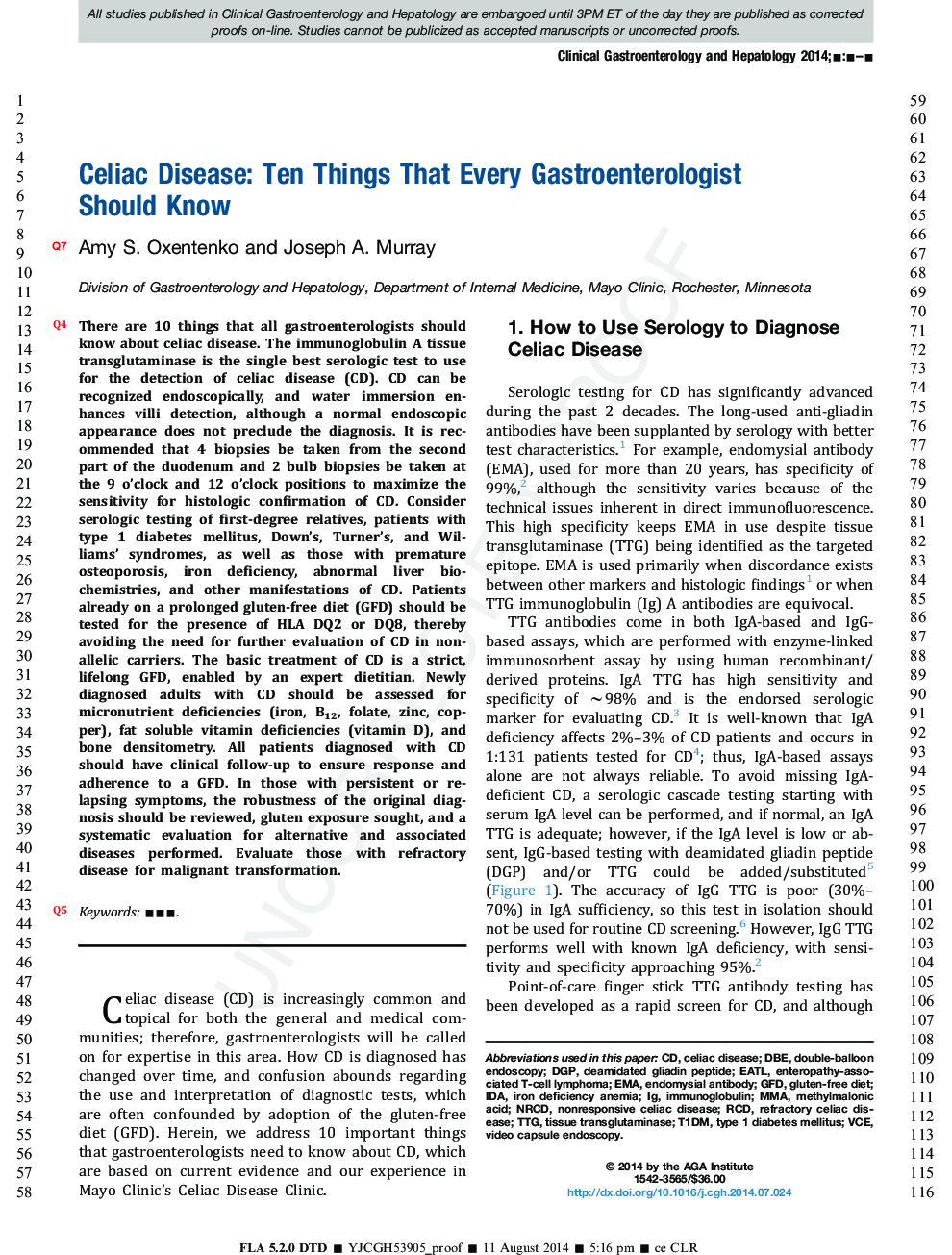| کد مقاله | کد نشریه | سال انتشار | مقاله انگلیسی | نسخه تمام متن |
|---|---|---|---|---|
| 3281343 | 1209118 | 2015 | 9 صفحه PDF | دانلود رایگان |
عنوان انگلیسی مقاله ISI
Celiac Disease: Ten Things That Every Gastroenterologist Should Know
ترجمه فارسی عنوان
بیماری سلیاک: ده چیز که هر متخصص گوارش باید آگاه باشد
دانلود مقاله + سفارش ترجمه
دانلود مقاله ISI انگلیسی
رایگان برای ایرانیان
کلمات کلیدی
DBECeliac SprueEMATTGIDAEATLMMAmethylmalonic acidGFDVCET1DMRCDDGPEndomysial antibody - آنتی بادی Endomysialdouble-balloon endoscopy - آندوسکوپی دو بالونVideo capsule endoscopy - آندوسکوپی کپسول ویدئوimmunoglobulin - ایمونوگلوبولینCeliac disease - بیماری سلیاکRefractory celiac disease - بیماری سلیاک یخ زدهTissue transglutaminase - ترانس گلوتامیناز بافتیDiagnosis - تشخیصTreatment - درمانtype 1 diabetes mellitus - دیابت نوع 1Gluten-free diet - رژیم غذایی فاقد گلوتنEnteropathy-associated T-cell lymphoma - لنفوم سلول T مرتبط با انتروپاتیIron deficiency anemia - نارسایی کمبود آهنdeamidated gliadin peptide - پپتید گلیادین deamidatedGenetics - ژنتیک
موضوعات مرتبط
علوم پزشکی و سلامت
پزشکی و دندانپزشکی
بیماریهای گوارشی
چکیده انگلیسی
There are 10 things that all gastroenterologists should know about celiac disease (CD). (1) The immunoglobulin A tissue transglutaminase is the single best serologic test to use for the detection of CD. (2) CD can be recognized endoscopically, and water immersion enhances villi detection, although a normal endoscopic appearance does not preclude the diagnosis. (3) It is recommended that 4 biopsies be taken from the second part of the duodenum and 2 bulb biopsies be taken at the 9 o'clock and 12 o'clock positions to maximize the sensitivity for histologic confirmation of CD. (4) Consider serologic testing of first-degree relatives, patients with type 1 diabetes mellitus, Down's, Turner's, and Williams' syndromes, as well as those with premature osteoporosis, iron deficiency, abnormal liver biochemistries, and other manifestations of CD. (5) Patients already on a prolonged gluten-free diet (GFD) should be tested for the presence of HLA DQ2 or DQ8, thereby avoiding the need for further evaluation of CD in non-allelic carriers. (6) The basic treatment of CD is a strict, lifelong GFD, enabled by an expert dietitian. (7) Newly diagnosed adults with CD should be assessed for micronutrient deficiencies (iron, B12, folate, zinc, copper), fat soluble vitamin deficiencies (vitamin D), and bone densitometry. (8) All patients diagnosed with CD should have clinical follow-up to ensure response and adherence to a GFD. (9) In those with persistent or relapsing symptoms, the robustness of the original diagnosis should be reviewed, gluten exposure sought, and a systematic evaluation for alternative and associated diseases performed. (10) Evaluate those with refractory disease for malignant transformation.
ناشر
Database: Elsevier - ScienceDirect (ساینس دایرکت)
Journal: Clinical Gastroenterology and Hepatology - Volume 13, Issue 8, August 2015, Pages 1396-1404
Journal: Clinical Gastroenterology and Hepatology - Volume 13, Issue 8, August 2015, Pages 1396-1404
نویسندگان
Amy S. Oxentenko, Joseph A. Murray,
